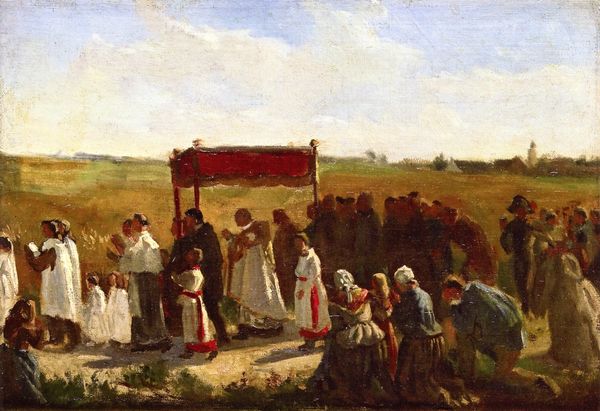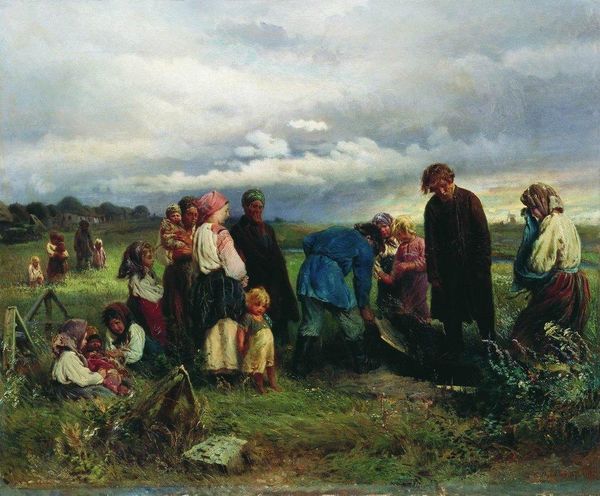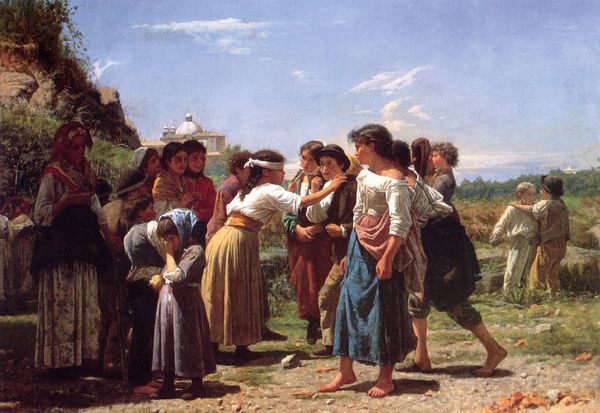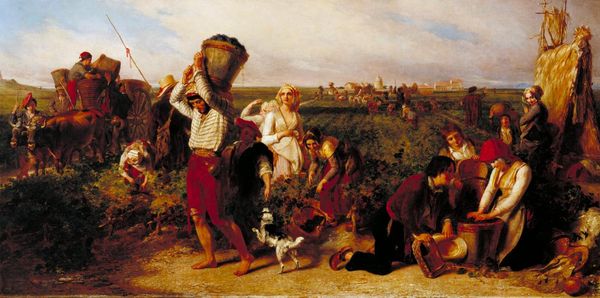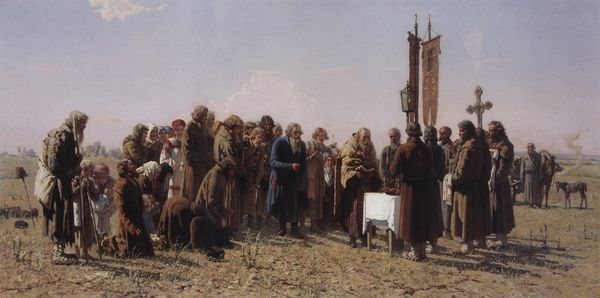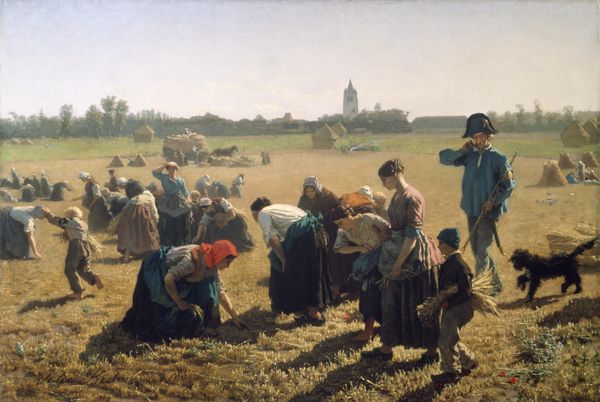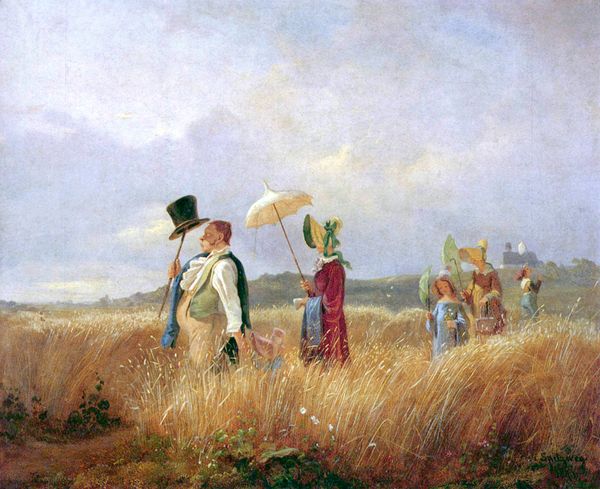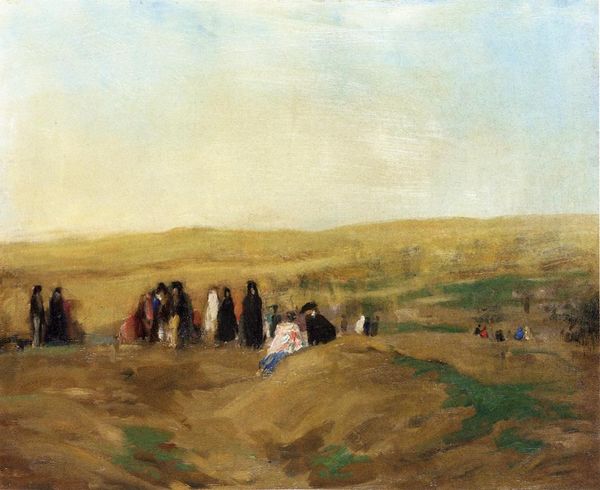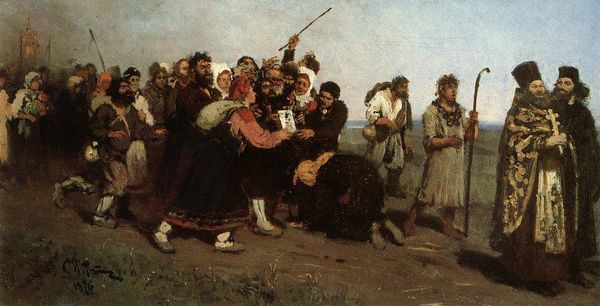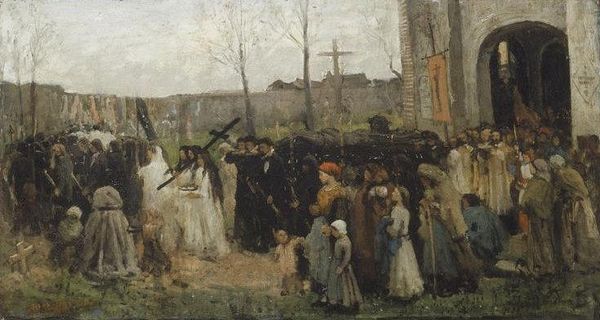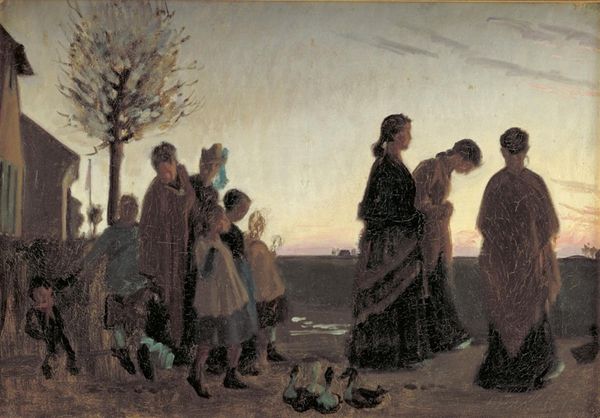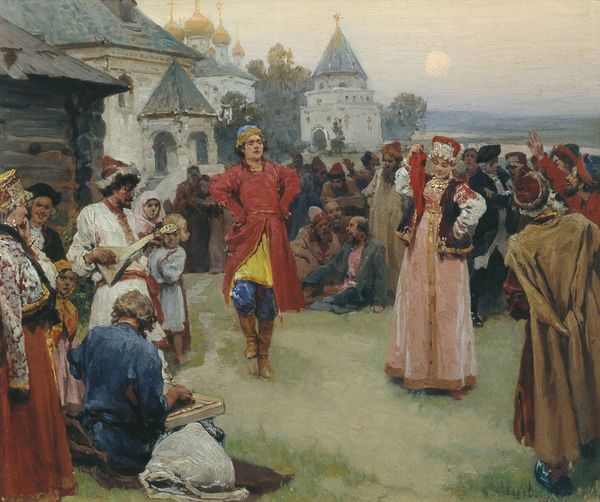
Copyright: Public domain
Jules Breton painted "The Blessing of the Wheat in Artois" to capture a procession moving through the fields. The painting's design is striking, divided horizontally into bands of wheat, people, and sky, all rendered in a palette dominated by earth tones and muted blues. The composition establishes a clear structure through its arrangement of figures and landscape, using perspective to guide the eye from the foreground towards the distant village. The procession, moving from left to right, is not merely a depiction of a religious event but also a careful orchestration of form and line. Breton uses the contrast between the dark figures and the golden wheat to create a sense of depth and movement, suggesting a semiotic interplay between the sacred and the mundane. The muted tones and realistic rendering of the scene highlight the connection between the people and their environment, reflecting a broader cultural engagement with themes of labor, faith, and nature. Ultimately, the painting invites us to consider how these formal elements work together to convey meaning and cultural values.
Comments
No comments
Be the first to comment and join the conversation on the ultimate creative platform.
